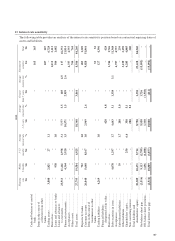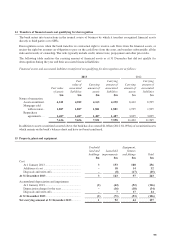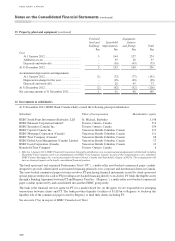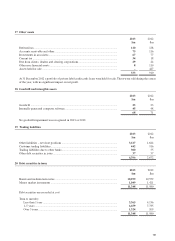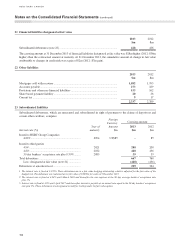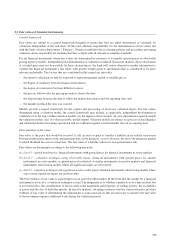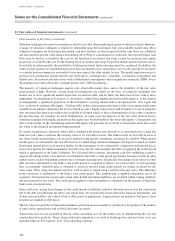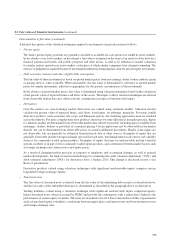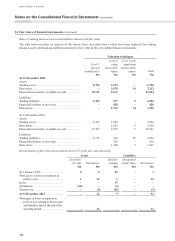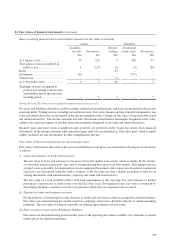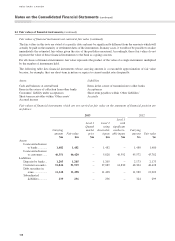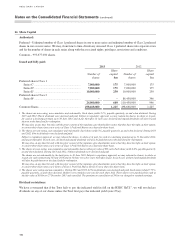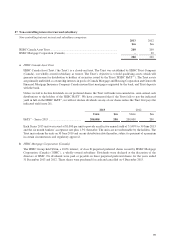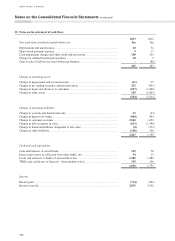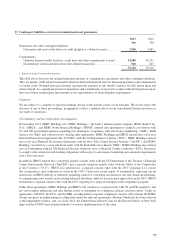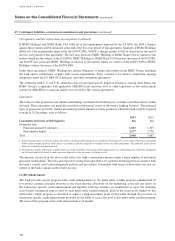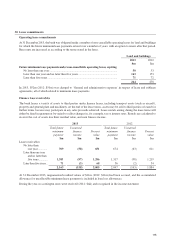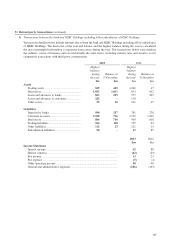HSBC 2013 Annual Report Download - page 109
Download and view the complete annual report
Please find page 109 of the 2013 HSBC annual report below. You can navigate through the pages in the report by either clicking on the pages listed below, or by using the keyword search tool below to find specific information within the annual report.
24 Fair values of financial instruments (continued)
Bases of valuing financial assets and liabilities measured at fair value (continued)
Assets Liabilities
Available-
for-sale
$m Derivatives
$m
Held for
trading
$m
Designated
at fair value
$m Derivatives
$m
At 1 January 2012 ............................... 19 122 8 580 43
Total gains or losses recognized in
profit or loss .................................. 1 (117) (1) (9) (36)
Issues ................................................... – – 43 – –
Settlements .......................................... (11) – – (571) –
Transfer out ......................................... – – (1) – –
At 31 December 2012 ......................... 9 5 49 – 7
Total gains or losses recognized in
profit or loss relating to those assets
and liabilities held at the end of the
reporting period ................................ – 5 1 – 7
During 2013 and 2012, there were no significant transfers between Level 1 and 2.
For assets and liabilities classified as held for trading, realized and unrealized gains and losses are presented in the income
statement under ‘Trading income excluding net interest income’. Fair value changes on long-term debt designated at fair
value and related derivatives are presented in the income statement under ‘Changes in fair value of long-term debt issued
and related derivatives’. The income statement line item ‘Net income from financial instruments designated at fair value’
captures fair value movements on all other financial instruments designated at fair value and related derivatives.
Realized gains and losses from available-for-sale securities are presented under ‘Gains less losses from financial
investments’ in the income statement while unrealized gains and losses are presented in ‘Fair value gains’ taken to equity
within ‘Available-for-sale investments’ in other comprehensive income.
Fair values of financial instruments not carried at fair value
Fair values at the balance sheet date of the assets and liabilities set out below are estimated for the purpose of disclosure
at follows:
i) Loans and advances to banks and customers
The fair value of loans and advances is based on observable market transactions, where available. In the absence
of observable market transactions, fair value is estimated using discounted cash flow models. Performing loans are
grouped, as far as possible, into homogeneous pools segregated by maturity and coupon rates. In general, contractual
cash flows are discounted using the bank’s estimate of the discount rate that a market participant would use in
valuing instruments with similar maturity, repricing and credit risk characteristics.
The fair value of a loan portfolio reflects both loan impairments at the reporting date and estimates of market
participants’ expectations of credit losses over the life of the loans. For impaired loans, fair value is estimated by
discounting the future cash flows over the time period in which they are expected to be recovered.
ii) Deposits by banks and customer accounts
For the purposes of estimating fair value, deposits by banks and customer accounts are grouped by residual maturity.
Fair values are estimated using discounted cash flows, applying current rates offered for deposits of similar remaining
maturities. The fair value of a deposit repayable on demand approximates its book value.
iii) Debt securities in issue and subordinated liabilities
Fair values are determined using quoted market prices at the reporting date where available, or by reference to quoted
market prices for similar instruments.
107


